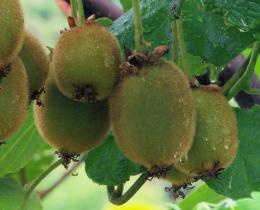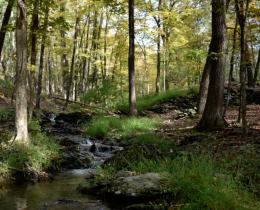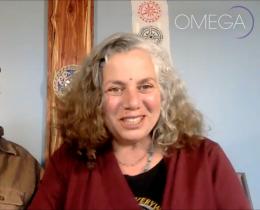Omega: Permaculture has so many interleaving aspects to it. How do you define it to someone who is totally new to the subject?
Eric: I’ll give a few different answers: one of them is meeting human needs while improving the health of the ecosystems around us; another is a design system for putting together the pieces of the things that help humans stay alive in such a way that they function like a healthy ecosystem; and the other is ecological edible landscaping—which seems to resonate a little more when talking about it on the home scale.
Omega: How do you see permaculture principles scaling up? How does it apply to the large farming operations that dominate the American landscape?
Eric: There are different strategies at different levels. At the personal level, any farm can go and switch things around. For the real big scale things to happen, we need some political priority changes. If we were to decide that climate change was actually a big deal and weren’t going to encourage the use of petroleum anymore, that would change agriculture pretty fast! In Australia, there are a number of permaculture design firms that are over 1,000 acres. Often they use techniques that come from the agroecology movement, as opposed to things that emerged from permaculture. But there are very good practices for doing this at a large scale. With that said, we need to break up and totally restructure the U.S. food system.
What I’m looking at now is farm-by-farm changes. People are starting to take it up to that next level. Things called food hubs are stepping in to fill in the processing and distribution void for small- to mid-sized farms. Food hubs and other strategies are helping people take on the marketing and distribution challenges.
Omega: There’s so much potentially available land in the suburbs of the United States. How can we make this land, currently used as lawns, more productive?
Eric: I’d certainly argue that some lawn is nice to have, but probably about two percent of what we have would be fine to keep. The rest is really quite excessive. The founders of permaculture thought that the suburbs were a great scale for each family to grow quite a bit of their own food, in a very intensive fashion. There’s something to be said for that. It’s easy to transform lawn into garden or pasture. For chickens or sheep, lawn is a lovely thing. But legally, many of us have difficulty having livestock in our suburban neighborhoods.
The nice thing is that there’s a ton of food you can grow in the front yard that looks beautiful and you’d never know its food. We call that the stealth edible landscape. It turns out that a lot of things people grow as ornamentals are actually edible. People grow a lot of serviceberries because they have beautifully colored flowers in spring, but they have excellent purple berries to eat later in the year. Then there’s bright lights chard, which is a beautiful orange and pink. The blueberry is useful and delicious and ornamental—and also native to North America. You can plant some of these ornamentals and—if you don’t do it in straight rows, don’t make it look like a garden, just fit it into the aesthetic of your front yard—people will be none the wiser. That’s a great, fun thing to do.
We use a technique called sheet mulching. You lay down waste products like cardboard and compost raw materials, right on top of the lawn. You can garden right into that for many, but not all, crops. We’ve had really good luck doing that going from lawn to tomatoes overnight.
Omega: Can you talk a bit about the ability of permaculture principles to increase soil quality and help slow climate change?
Eric: The two big issues with climate change are reducing emissions and sequestering carbon. Growing locally means that you’re reducing emissions. Growing in your yard is reducing the most emissions possible, but it doesn’t necessarily sequester carbon. When we grow annual crops and till the soil over every year, we’re preventing some of that stored carbon from accumulating. In perennial systems—which is a lot of what we emphasize in permaculture—the carbon is held in the perennial plants, in the trees, in the herbaceous perennials, and a lot of it is held in the soil. Two thirds of it actually.
Omega: Can you give some specific examples of what can be grown in that way?
Eric: Fruits and nuts; pears and persimmons, jujubes, chestnuts. There are all sorts of great perennial vegetables. Rhubarb and asparagus. There’s perennial broccoli. There are perennial beans. You can’t grow everything that way but there are an awful lot of things we have that make perennial produce.
Omega: As you develop a deeper environmental awareness, how do you embrace the seriousness of the entire situation while staying grounded enough to act?
Eric: My experience has been that permaculture really gives me hope to keep going. Particularly around climate change right now, the more I’m learning about these kinds of agriculture that fight climate change, the more hopeful I am. I had previously never been very hopeful about climate change, but now the amount of hope I have increases as the amount of work I do on solutions increases.



